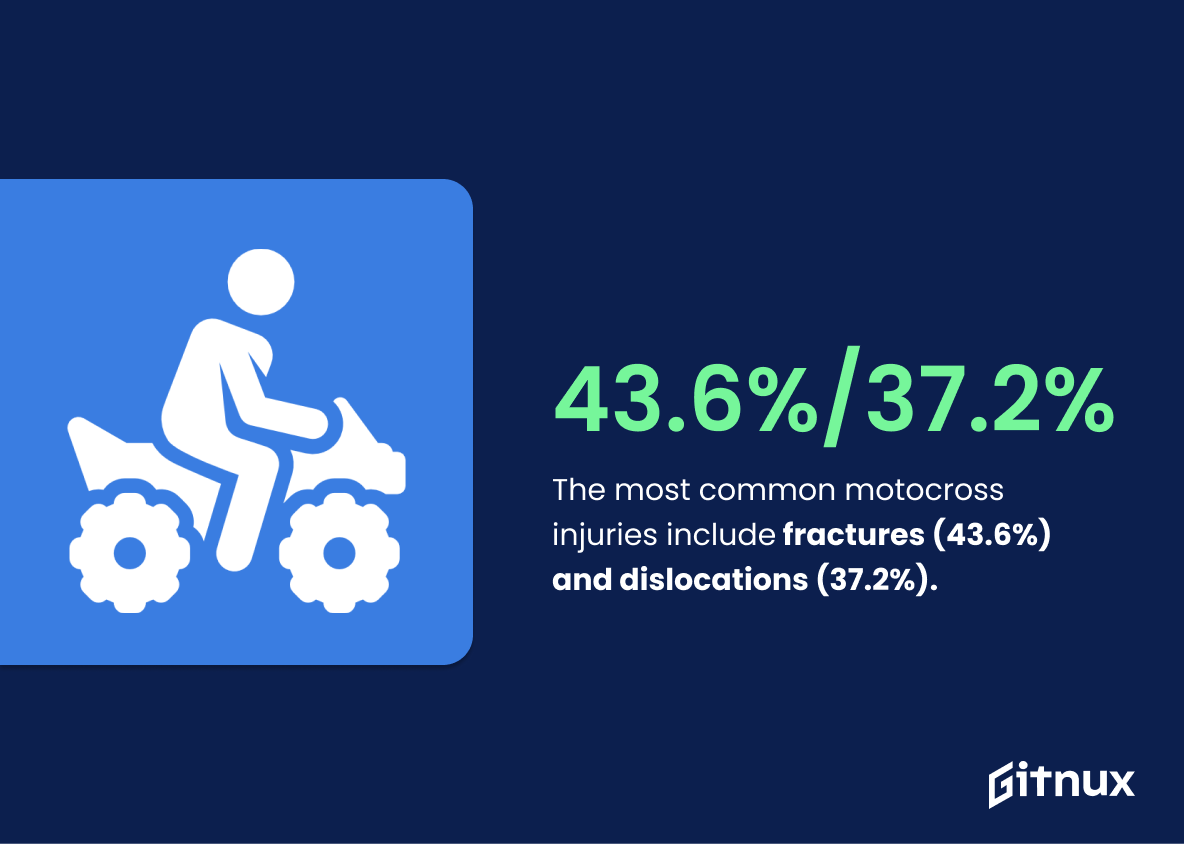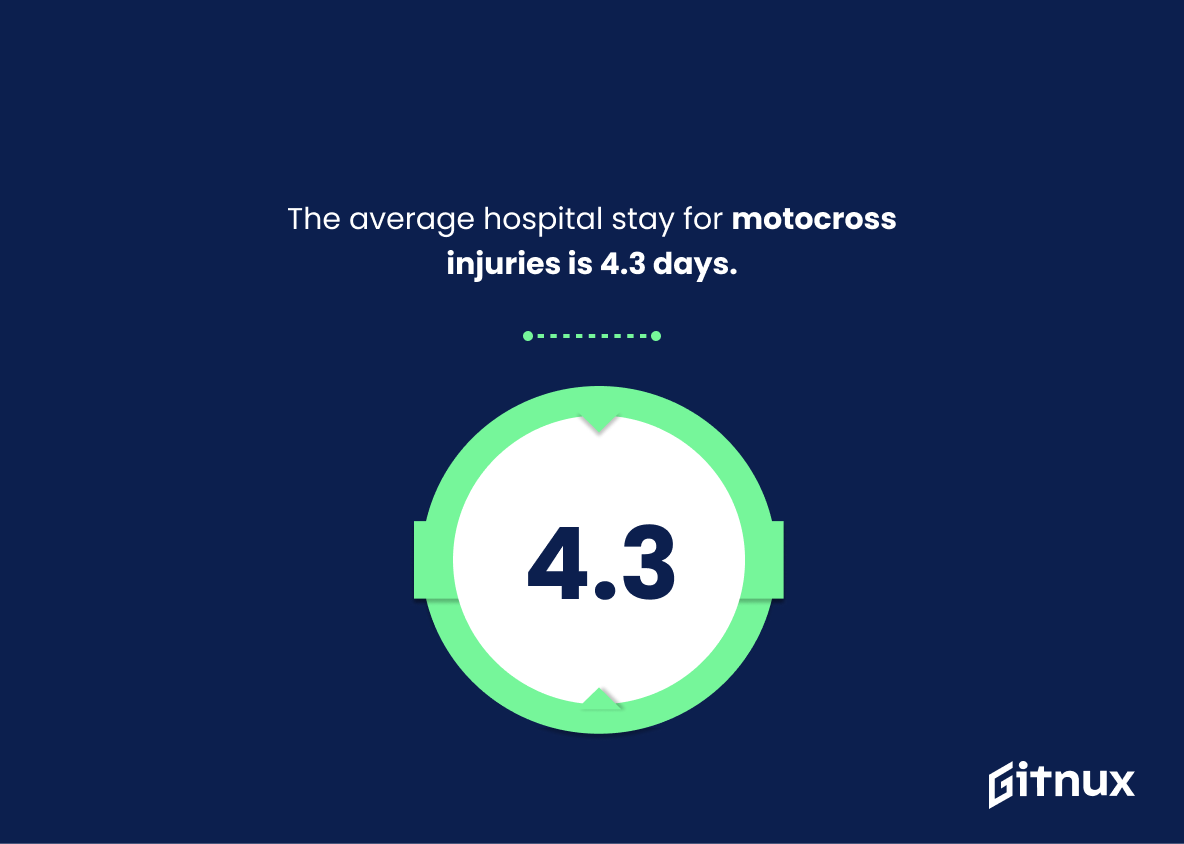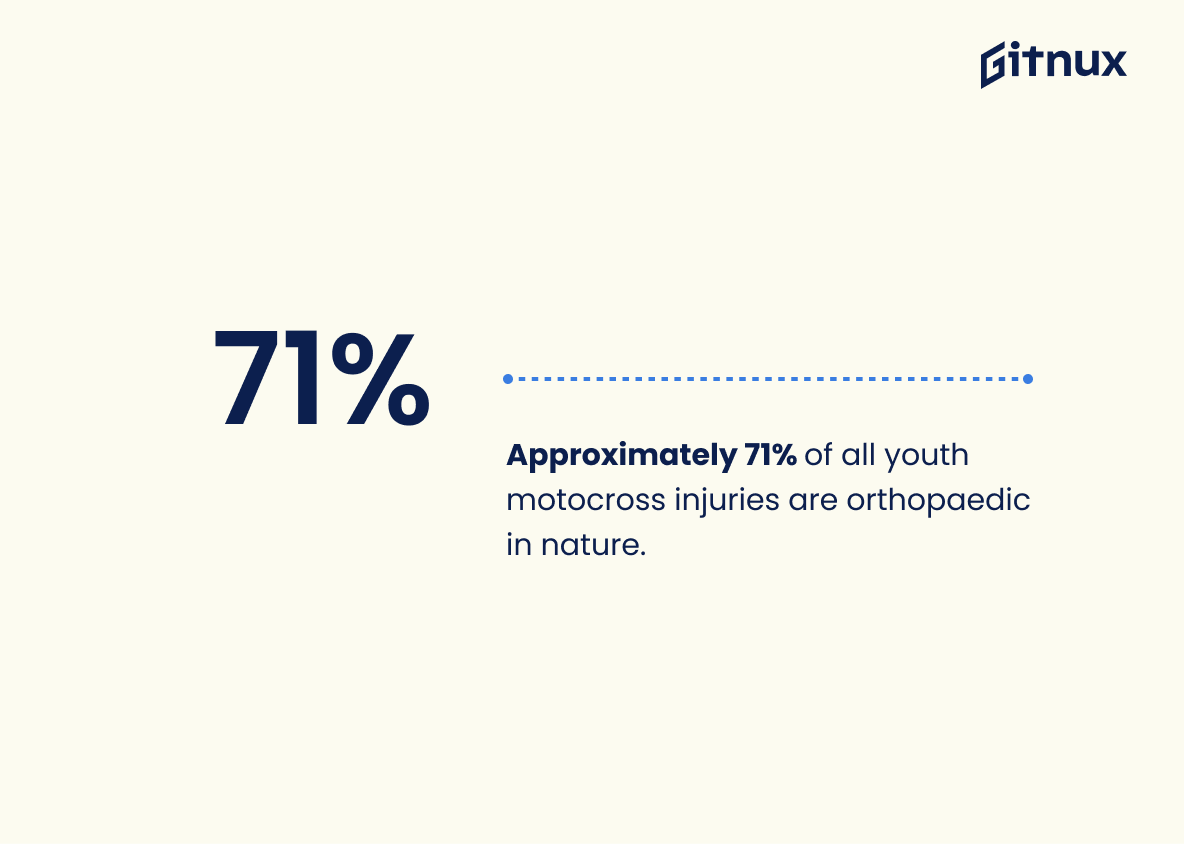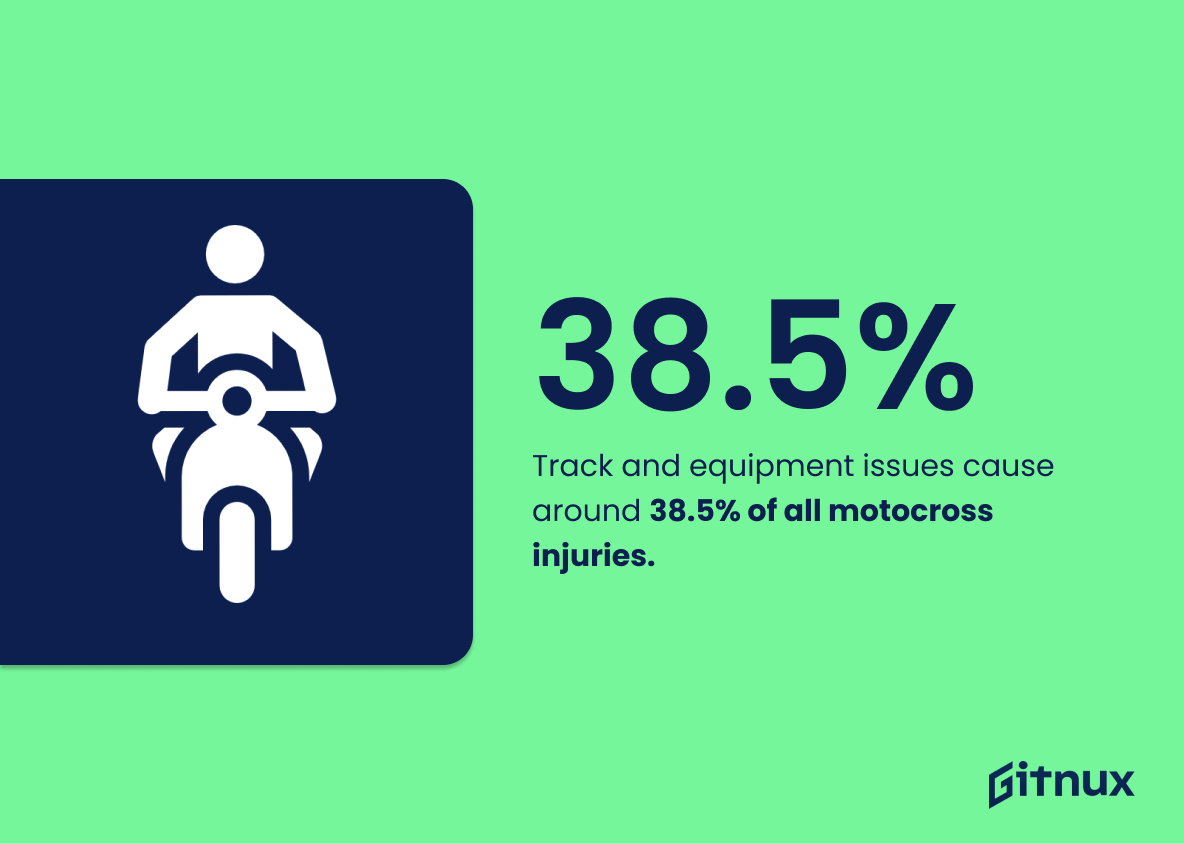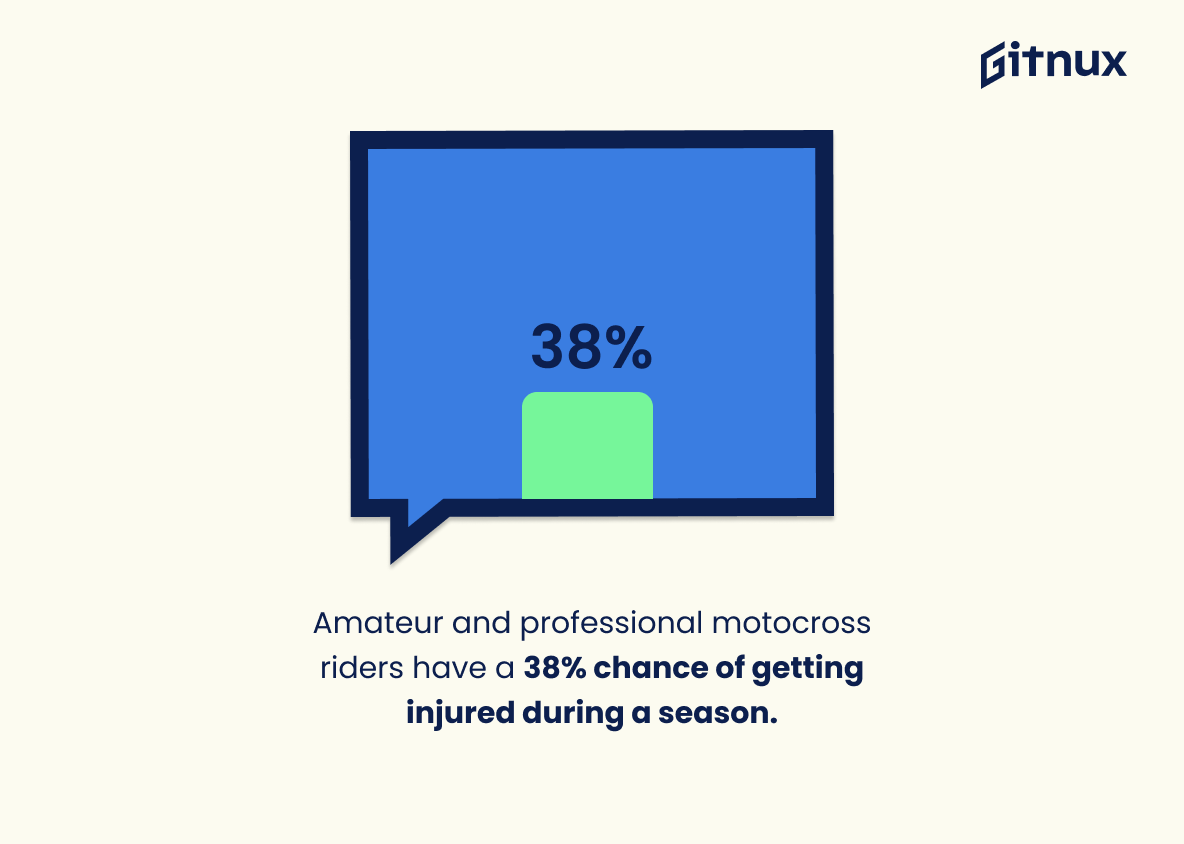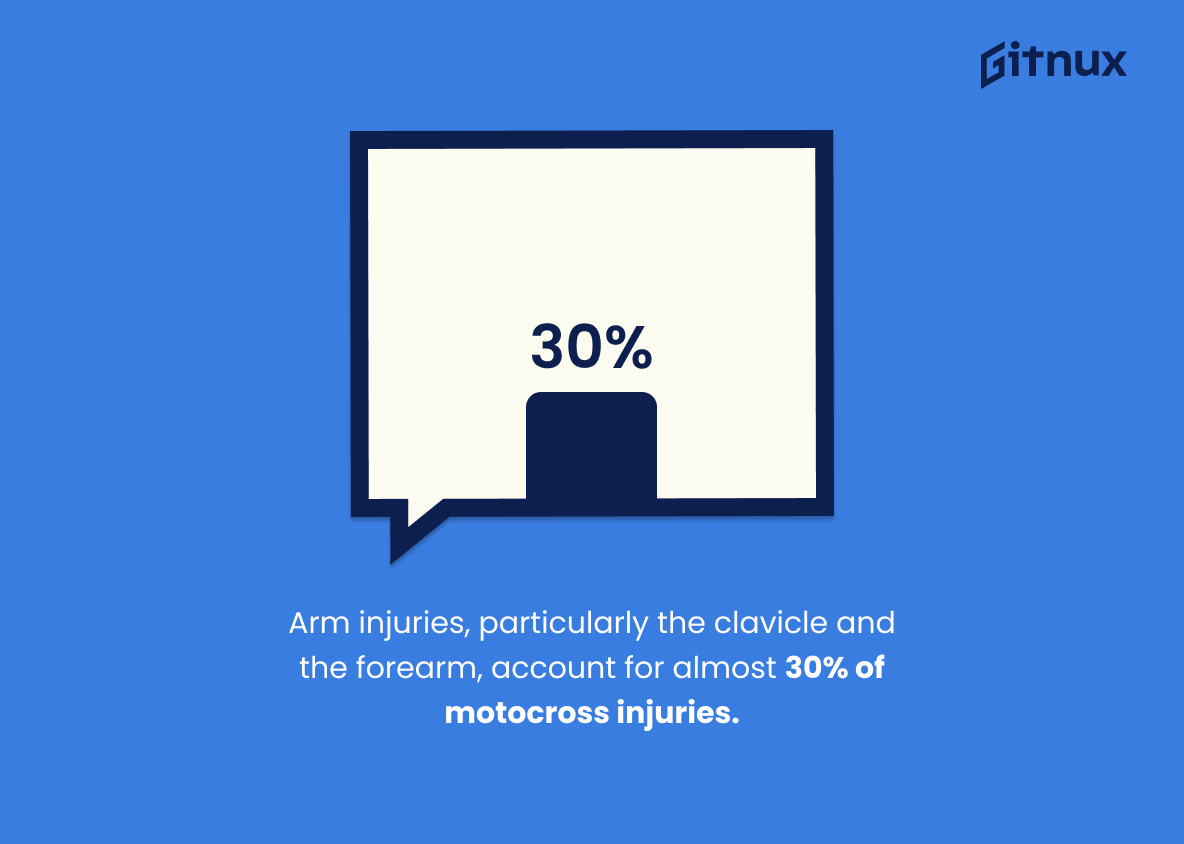Motocross is an extreme sport that has become increasingly popular in recent years. Unfortunately, it also comes with a high risk of injury. In this blog post, we will be looking at the statistics surrounding motocross injuries and exploring what they tell us about the risks associated with participating in this activity.
We’ll look at data from various sources to get a better understanding of how common these injuries are and which body parts are most commonly affected by them. Additionally, we’ll discuss some potential causes for these injuries as well as ways to reduce their occurrence rate. By the end of this article, you should have a good idea of why motocross can be so dangerous and how best to stay safe while enjoying it.
The statistic of 65 injuries for every 1,000 hours of riding is a stark reminder of the risks associated with motocross. It serves as a warning to riders that they should take the necessary precautions to protect themselves while riding. This statistic is a powerful indicator of the potential for serious injury that comes with participating in the sport.
50% of motocross injuries occur in riders aged 16 years or below.
This statistic is a stark reminder of the dangers of motocross, particularly for younger riders. It highlights the importance of taking safety precautions and ensuring that riders of all ages are properly trained and equipped before taking part in the sport. It also serves as a warning to parents and guardians of young riders, emphasizing the need for close supervision and guidance when it comes to motocross.
Motocross Injuries Statistics Overview
The most common motocross injuries include fractures (43.6%) and dislocations (37.2%).
This statistic is a crucial piece of information when it comes to understanding the prevalence of motocross injuries. It reveals that fractures and dislocations are the two most common types of injuries sustained by motocross riders, making up a combined total of 80.8%. This highlights the importance of taking the necessary safety precautions when participating in motocross, as these two types of injuries can be particularly serious.
Arm injuries, particularly the clavicle and the forearm, account for almost 30% of motocross injuries.
This statistic is a crucial indicator of the dangers of motocross, as it highlights the prevalence of arm injuries in the sport. It is important to be aware of the risks associated with motocross, and this statistic serves as a reminder that arm injuries are a common occurrence. Knowing this information can help riders take the necessary precautions to protect themselves and reduce the risk of injury.
Motocross riders have a 30 times higher risk of orthopedic injuries compared to non-motocross riders.
This statistic is a stark reminder of the potential risks associated with motocross riding. It highlights the importance of taking the necessary safety precautions to reduce the likelihood of orthopedic injuries. It also serves as a warning to those considering taking up the sport, that they should be aware of the risks involved.
41% of motocross injuries involve multiple body regions.
This statistic is a stark reminder of the potential severity of motocross injuries. It highlights the fact that a single crash can cause harm to multiple parts of the body, making it essential for riders to take the necessary safety precautions.
The average hospital stay for motocross injuries is 4.3 days.
This statistic is a crucial piece of information when it comes to understanding the severity of motocross injuries. It provides insight into the amount of time a person may need to spend in the hospital to recover from an injury sustained while participating in the sport. Knowing the average hospital stay for motocross injuries can help people make informed decisions about their safety and the risks associated with the sport.
The incidence of spinal injuries in motocross is 2.3 per 1,000 riders.
This statistic is a crucial indicator of the risks associated with motocross riding, as it provides a clear picture of the likelihood of a rider sustaining a spinal injury. It is an important piece of information for anyone considering taking up the sport, as it can help them make an informed decision about the potential risks involved. Additionally, it can be used to inform safety regulations and protocols, helping to ensure that riders are as safe as possible while participating in the sport.
Motocross is considered the second most dangerous sport after professional football (soccer).
This statistic serves as a stark reminder of the risks associated with Motocross, highlighting the fact that it is one of the most dangerous sports out there. It is important to be aware of the potential for injury when engaging in this sport, and to take the necessary precautions to ensure safety. Knowing that Motocross is considered the second most dangerous sport after professional football (soccer) can help inform decisions about whether or not to participate in the sport, and how to best protect oneself if they do.
Approximately 71% of all youth motocross injuries are orthopaedic in nature.
This statistic is a stark reminder of the potential risks associated with motocross. It highlights the fact that the majority of injuries sustained by youth riders are orthopaedic in nature, meaning they can have long-term effects on the body. This is an important statistic to consider when discussing the safety of motocross and the need for protective gear.
Motocross accidents result in an annual injury rate of 1.1%.
This statistic is a powerful reminder of the potential risks associated with motocross. With an annual injury rate of 1.1%, it is clear that motocross is not a sport to be taken lightly. This statistic serves as a warning to those considering taking up the sport, and a reminder to those already involved to take all necessary safety precautions.
An estimated 70% of motocross riders have had at least one injury that required medical attention.
This statistic serves as a stark reminder of the risks associated with motocross riding. It highlights the fact that a large majority of riders have experienced an injury that required medical attention, emphasizing the importance of taking safety precautions and wearing protective gear while riding.
Track and equipment issues cause around 38.5% of all motocross injuries.
This statistic is a crucial reminder that motocross riders should take the necessary precautions to ensure their track and equipment are in proper working order. Without proper maintenance, riders are at an increased risk of injury due to the high percentage of injuries caused by track and equipment issues. This statistic serves as a warning to riders to take the necessary steps to ensure their safety while participating in motocross.
Amateur and professional motocross riders have a 38% chance of getting injured during a season.
This statistic is a stark reminder of the risks associated with motocross riding. It highlights the fact that even the most experienced riders are not immune to the potential for injury, and that safety should always be a top priority for anyone engaging in the sport.
Conclusion
Motocross is a dangerous sport, with an estimated 65 injuries for every 1,000 hours of riding. The most common motocross injuries include fractures (43.6%) and dislocations (37.2%), while arm injuries account for almost 30% of all motocross-related accidents. Males are more likely to be injured in a motocross accident than females, at 95%. Head injuries such as concussions make up 15% of the total number of reported cases, while knee and spinal issues also occur frequently among riders.
Furthermore, 41% of all reported incidents involve multiple body regions being affected by injury or trauma simultaneously; 21% require surgery; 70% result in missing school or work for over one week; 38.5 % are caused by track/equipment issues; and amateur/professional riders have a 38 % chance per season to get injured during their activities on the track . It is clear that taking part in this extreme sport carries significant risks which should not be taken lightly – proper safety precautions must always be observed when engaging in any kind of motorized activity like Motocross racing.
References
0. – https://www.researchgate.net
1. – https://www.medicalnewstoday.com
2. – https://www.liebertpub.com
3. – https://www.motosport.com
4. – https://www.pubmed.ncbi.nlm.nih.gov
5. – https://www.medscape.com
6. – https://www.ncbi.nlm.nih.gov
